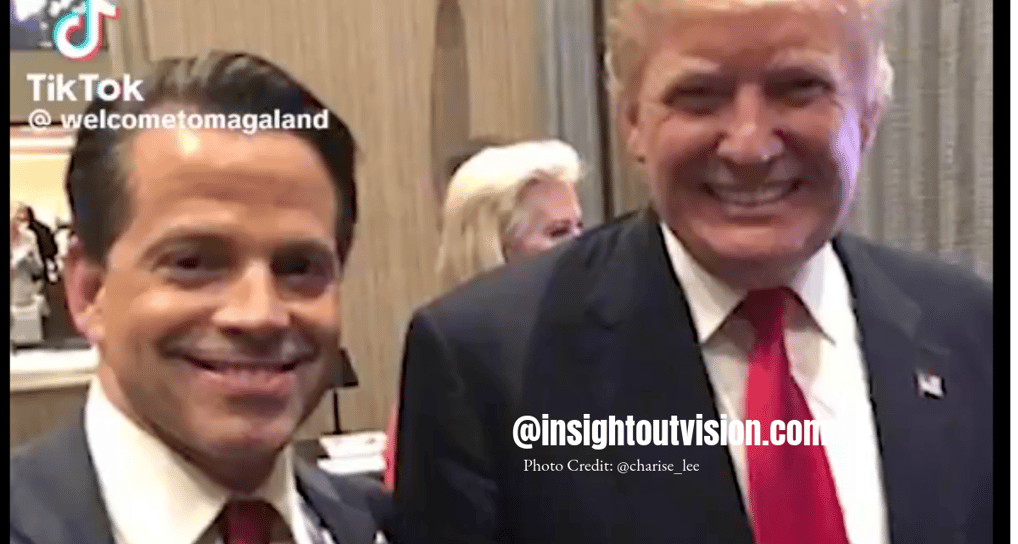The Price of Dissent: Navigating Trump’s Administration Through the Lens of Scaramucci and Beyond
5/16/20253 min read


The Price of Dissent: Navigating Trump’s Administration Through the Lens of Scaramucci and Beyond
Published May 15, 2025 | Insightoutvision.com Deep Dives: Behide the headlines
In the ever-turbulent landscape of American politics, few stories encapsulate the volatility of working under Donald Trump as vividly as that of Anthony Scaramucci. His brief, 10-day stint as White House Communications Director in 2017 is a cautionary tale of dissent, loyalty, and the high stakes of challenging a president known for his thin skin and demand for unwavering allegiance. As we reflect on this period, particularly through the lens of a recent X post by
@charise_lee, we uncover a narrative that resonates with the broader dynamics of Trump’s administration—a world where disagreement often led to swift dismissal, and sycophancy became a survival strategy.
The X post, shared on May 11, 2025, features a video that juxtaposes Scaramucci’s rapid exit with the behavior of current Trump administration officials. It suggests that these officials, aware of the risks, have opted for a strategy of excessive flattery, a tactic criticized as both embarrassing and short-sighted. This critique is not new; it echoes the 2017 Cabinet meeting where members lavished praise on Trump, a moment that has since been scrutinized as a prime example of sycophantic behavior. The video’s narrative posits that such actions, while perhaps securing short-term favor, may lead to long-term regret, especially as Trump’s legacy continues to be debated.
Scaramucci’s story is a microcosm of the broader turnover within Trump’s administration. According to Wikipedia, his appointment on July 21, 2017, and subsequent dismissal on July 31, 2017, underscore a pattern where policy disagreements often resulted in swift firings. This trend is further illustrated by the case of Rex Tillerson, who was dismissed in March 2018 after a deteriorating relationship with Trump. Tillerson’s exit, like Scaramucci’s, highlights an administration where loyalty was paramount, and dissent was met with decisive action.
The X post’s critique extends beyond these individual cases to question the morality and future implications of such behavior. It suggests that officials who engage in flattery to avoid dismissal might one day face the consequences of their actions, particularly as Trump’s presidency is increasingly viewed through a critical lens. This perspective is supported by historical data from the Brookings Institution, which noted that Trump’s administration had the highest turnover rate of any president since 1980, with 92% of his initial A-team and an additional 45% of subsequent hires departing. This turnover, often precipitated by policy disagreements, paints a picture of an administration where dissent was not just discouraged but penalized.
As we consider these dynamics, it’s worth reflecting on the broader implications for governance and accountability. The demand for loyalty over competence or ethical consideration raises questions about the health of democratic institutions. It also prompts us to consider the personal and professional toll on those who navigate such an environment. For Scaramucci, the fallout was immediate and public; for others, the consequences may be more subtle but no less significant.
The video’s narrative also touches on a poignant irony: being fired by Trump might eventually be seen as a badge of honor. This idea stems from the growing recognition of Trump’s controversial legacy, where standing up to him, even at the cost of one’s position, could be viewed as a mark of integrity. This perspective challenges us to rethink the value of dissent in political spheres and the courage it requires.
As we wrap up this exploration, let’s consider a few thought-provoking questions:
How does the demand for loyalty over dissent impact the quality of decision-making in high-stakes political environments?
What are the long-term personal and professional consequences for individuals who choose flattery over principle in such settings?
Could the high turnover rate in Trump’s administration be seen as a strength or a weakness of his leadership style, and why?
In what ways might the legacy of Trump’s administration influence future political behaviors and expectations of loyalty?
Explore deep insights on current events and growth.
Vision
Truth
hello@insightoutvision.com
+1-2236036419
© 2025. All rights reserved.
